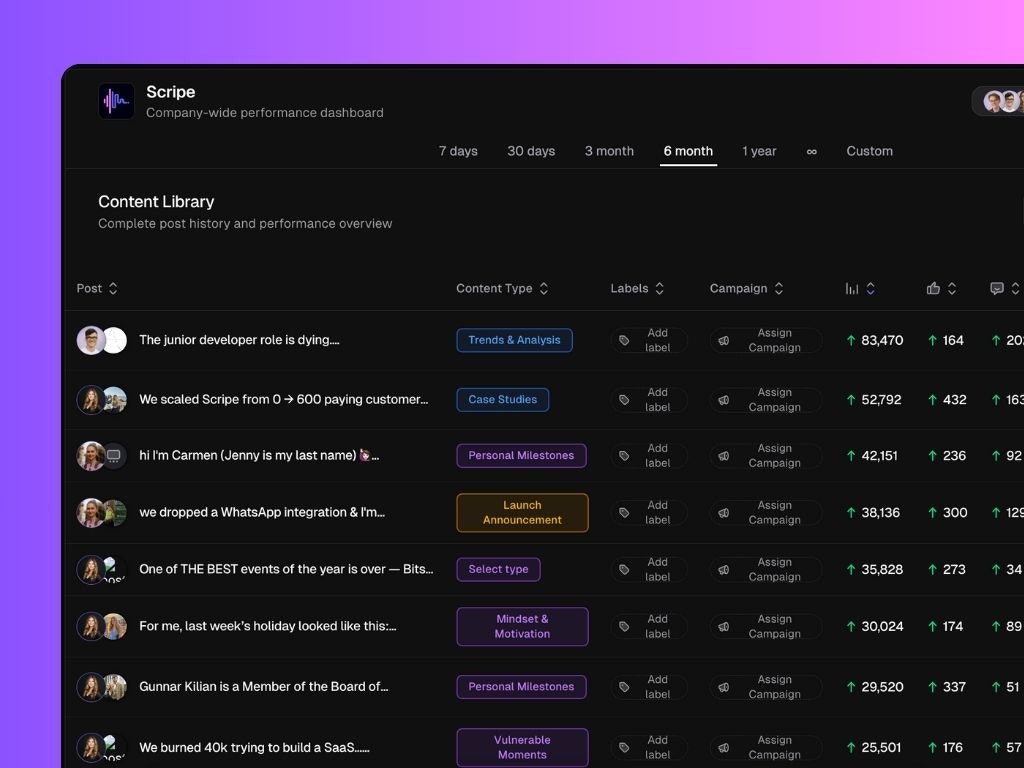How to use the Dashboard:
- Select Personal Brands to compare: Click the dropdown at the top-right to filter analytics per brand or select All Brands to view combined performance.
- Select a date range: Switch between 7 days, 30 days, 3 months, 6 months, 1 year, or custom ranges to analyze performance over time.
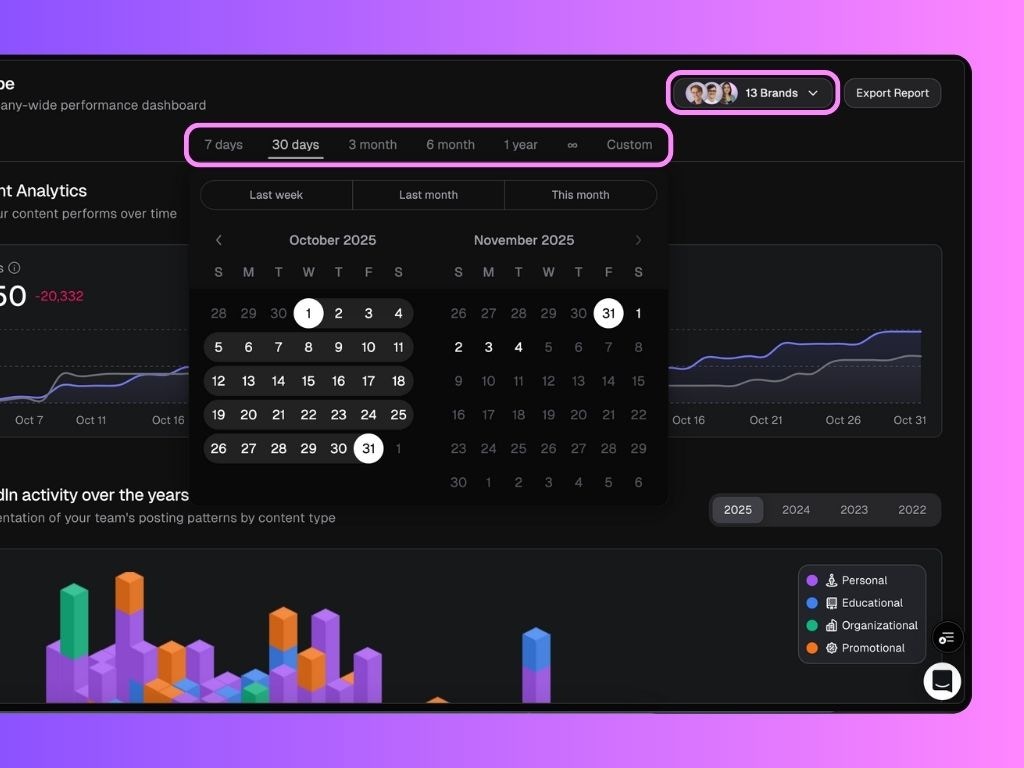
At any time, click Export Report (top-right corner) to generate a shareable performance report. The report is downloaded as a .CSV file, containing most metrics displayed in your dashboard — including posts, impressions, likes, and comments. You can open it in tools like Excel, Google Sheets, or Notion databases for deeper analysis or reporting.
Metrics Overview
Key Metrics Tracked:- Posts: Number of posts published.
- Followers: Growth in LinkedIn followers.
- Engagement Rate: % based on likes, comments, shares per impression.
- Earned Media Value: The estimated value of your impressions based on your average CPM (Cost per thousand impressions).
Click the currency symbol in the top-right corner of the EMV box to switch between € and $.
- Activity Tracker: See how your team’s posting frequency compares to previous periods.
- Impressions: Total reach for the selected period of time.
- Engagement Count: Total interactions (likes, comments, shares).
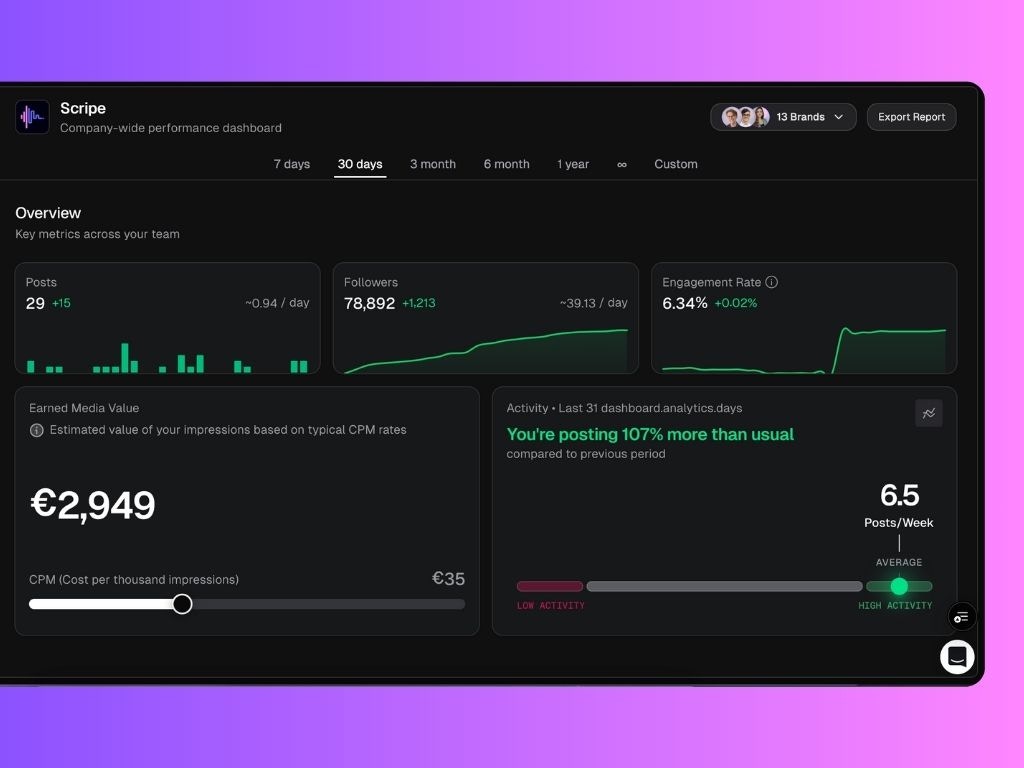
Yearly Activity Visualization
The 3D Activity Chart visualizes your team’s LinkedIn posting behavior over the year.Each bar represents post activity, color-coded by content type:
- 🟣 Personal
- 🟠 Promotional
- 🟢 Organizational
- 🔵 Educational
- Streaks: Longest and current posting streaks.
- Post History: Total posts and your best-performing day.
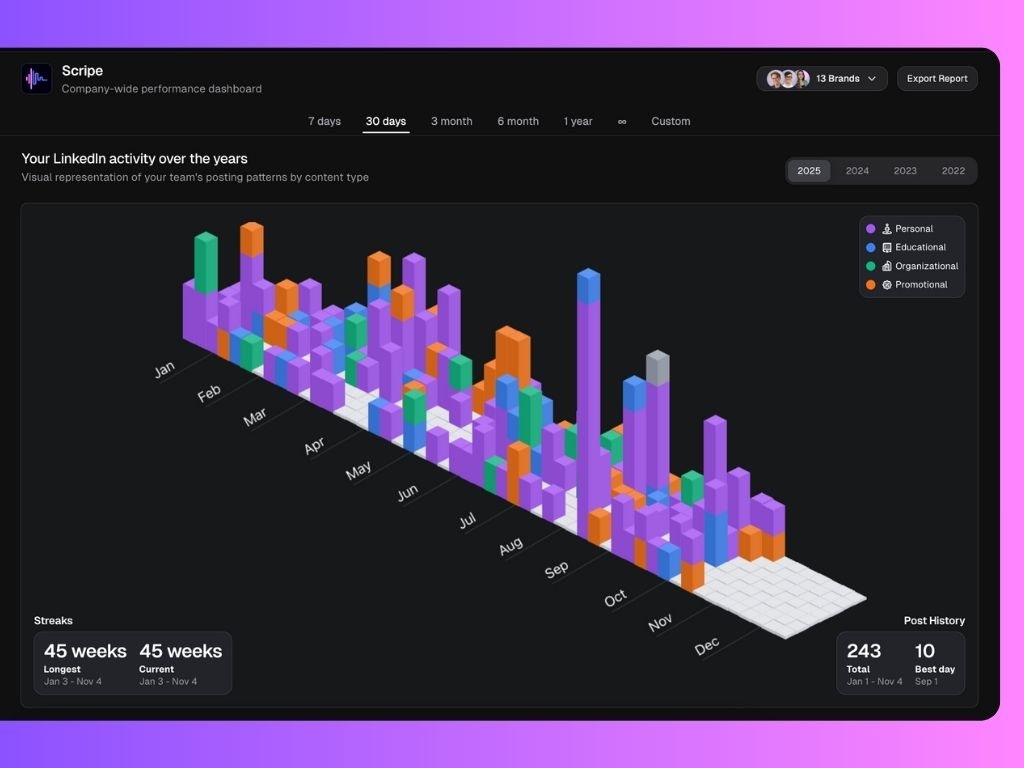
Performance Analysis
The Performance Analysis section breaks down your team’s content performance in detail — and can be filtered by Posts, Impressions, Likes, or Comments depending on what you want to measure. You can toggle between these filters at the top-right of the section to see how each metric affects your team’s performance view. It includes:- Content Type Performance: Average results per content category (e.g. Personal, Promotional, Educational, Organizational). This helps you see which type of content your team’s audience engages with most.
- Top Post Formats: The best-performing post formats. Switching filters here lets you analyze what drives the most likes versus impressions, for example.
- Media Type Performance: How different media formats perform (text-only vs image posts).
- Content Performance by Labels: Compare performance for your pre-set content labels.
- Content Performance by Campaigns: See the overall results of your Campaigns for the selected period of time.
Campaigns are shown if they have posts created during the selected date range. Performance metrics reflect all engagement data for those posts and not only for the selected date range.

Team Performance
The Team Performance section ranks your top creators and shows who’s driving the most engagement. You’ll see:- Leaderboard: Sorted by total posts within the selected period.
- Top Posts: Highlights your team’s most-viewed posts with impressions count.
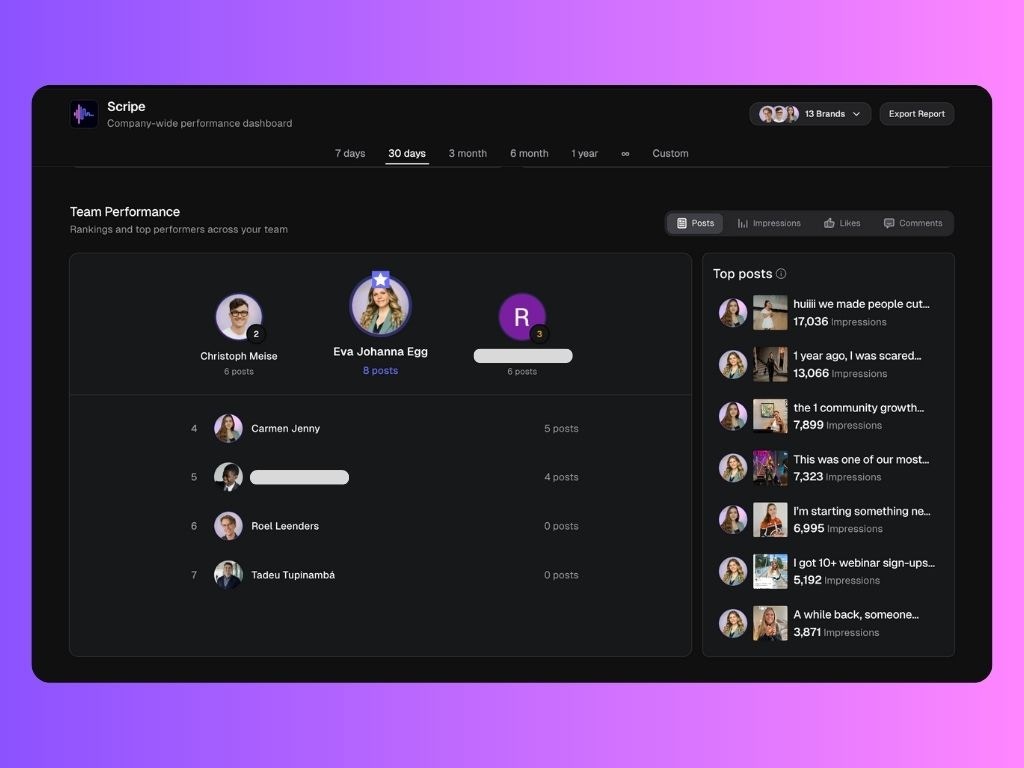
Timing & Activity
This chart compares your company’s posting behavior with industry benchmarks to help identify the best times to post daily and weekly.- Blue line: Your company’s posting times.
- Gray dotted line: Average posting time for your industry.
- Insights: Automatically generated tips on when to post for higher engagement.
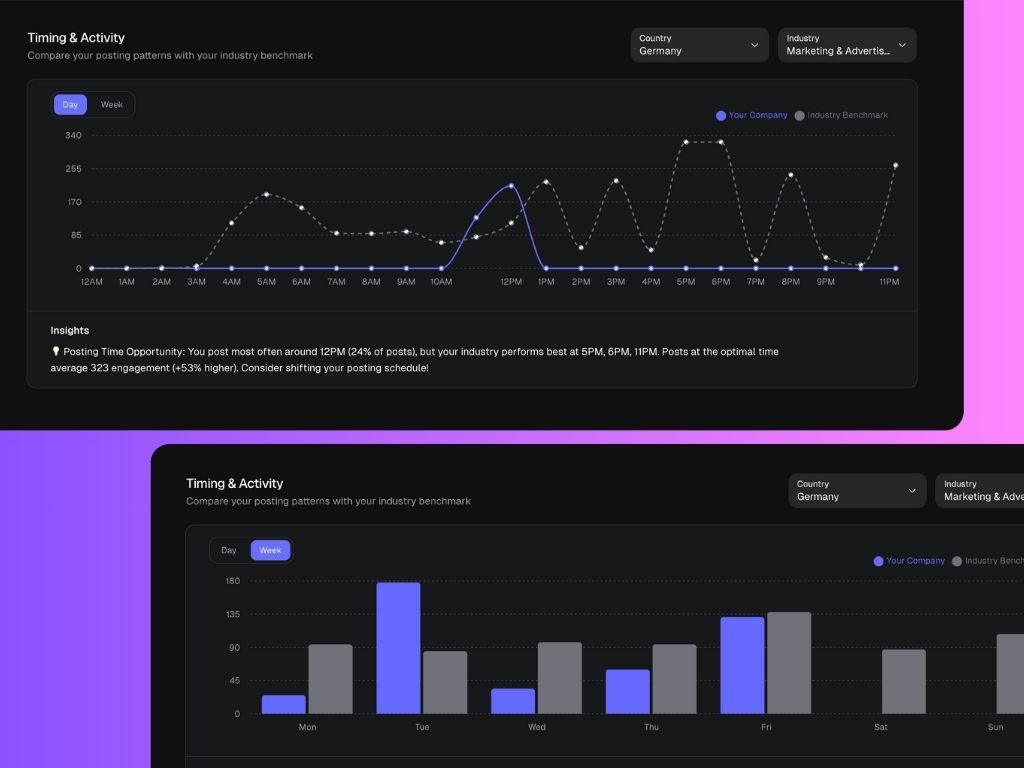
Content Library
The Content Library lists every post published by the Personal Brands managed in Scripe with complete performance metrics. You can view:- Post title and content type
- Labels and campaigns assigned
- Detailed metrics for each post: impressions, likes, comments, engagement rate, and post date
